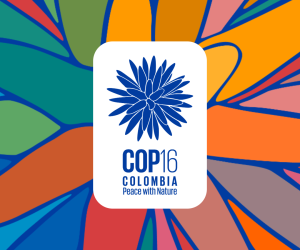News > Clipping
16.10.23
The carbon market: an opportunity to control deforestation caused by agricultural expansion in Brazil
Brazil is at the center of efforts to meet the United Nations’ global climate and biodiversity goals. More than 14% of the world’s priority ecosystem conservation areas are in Brazil (PLANGEA Web, 2023). As a result, the country has the greatest potential for Reducing Emissions from Deforestation and Forest Degradation in Developing Countries (REDD+), with an estimated nine billion tons of carbon that will not be released into the atmosphere if our ecosystems are preserved. In addition to having the greatest biodiversity on the planet, many species of fauna and flora are unique to Brazil and several plant species of global economic importance are native to the country.
Nevertheless, despite its undeniable importance, since 1970 Brazil has lost 18% of its ecosystems to deforestation. According to the Annual Deforestation Report (MapBiomas, 2023), in 2022 Brazil’s deforested area grew by 22%. Agricultural expansion was the main culprit for the suppression of native plant cover, accounting for 96% of this deforested area, nearly two million hectares. Yet only 1% of the farms registered in the Rural Environmental Registry (CAR) showed any sign of deforestation in 2022. Although very low, this percentage represented 79% of deforestation alerts in Brazil, reflecting a high concentration of deforestation on a small number of registered farms. Specifically in the Cerrado, one of the most severely affected biomes, the Ministry of Environment estimates that half of the deforestation was carried out legally, duly authorized by state environmental agencies.
This data underscores the urgency of implementing policies to reduce legal deforestation and to increase the voluntary conservation of native vegetation, as well as to manage environmental resources more efficiently, moving towards sustainable agricultural production. In addition to social and environmental benefits on national and global scales, such as climate change mitigation, these actions offer farmers access to deforestation-free commodity markets, including the European Union and the United Kingdom.
According to the Law on the Protection of Native Vegetation (known as the Brazilian Forest Code), farmers must set aside part of the area of native vegetation on their rural property as a Legal Reserve, in addition to maintaining/restoring Permanent Preservation Areas on their land. Studies reveals that landowners believe that compliance with these requirements fulfills their obligation to the environment. In order to encourage behavioral changes and stimulate additional steps, other mechanisms are needed to make farmers realize that the voluntary conservation or restoration of native vegetation is an attractive business opportunity.
In this context, the MATOPIBA region draws special attention as the country’s fastest-growing agricultural frontier. It accounted for most of the Cerrado’s deforestation in 2022, around 82% of the area of native vegetation cleared. The ten municipalities with the biome’s most deforested areas are also located in this territory. In order to identify challenges and opportunities for financial mechanisms for environmental conservation and restoration, the International Institute for Sustainability (IIS) interviewed more than 60 farmers in the four states that make up the MATOPIBA region (Maranhão, Tocantins, Piauí and Bahia). The survey, financed by the Land Innovation Fund (LIF), showed that the majority of farmers there (70% of those interviewed) see the sale of carbon credits as their main source of potential income from areas with natural vegetation, followed by payments for environmental services (PES).








